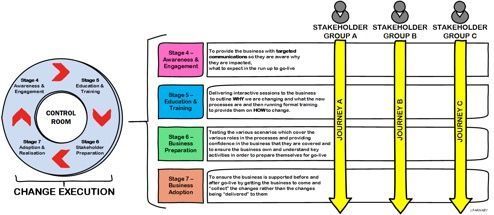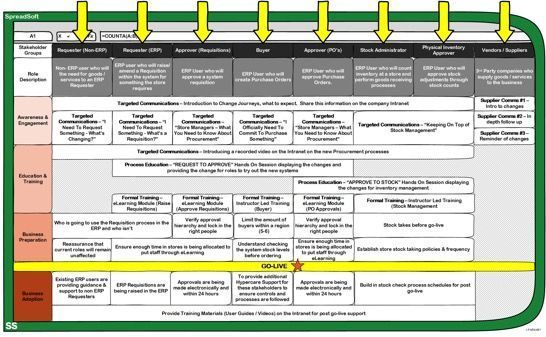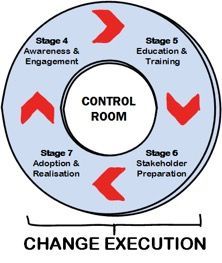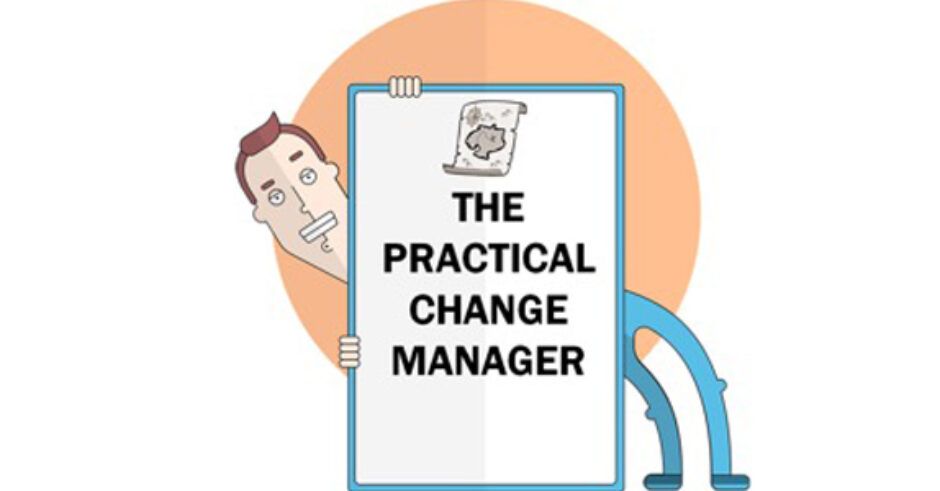“Failing to plan is like planning to fail”
Navigating the waters of change management can be a stormy journey and if you don’t have your map to hand or you’re unable to plot your course and plan your route then all you’re likely to achieve is a series of random events which doesn’t even begin to tackle the age-old question “how does this change impact me?”
The Change Plan is your tool which will outline all the necessary activities that need to be completed to execute the change effectively. But before we launch into some examples of change planning I want to cover an important concept which is often missed. There are likely to be several stakeholder groups which are likely to be impacted in different ways and it’s the change teams’ job to map these out so that the activities set are truly going to invoke a positive reaction. For example, if a process is impacting both IT enabled and non-IT enabled colleagues, then the methods used and activities will be different for both.
The picture below highlights that each stakeholder group will need to go on a different change journey for them to be fully prepared for the changes to come.

So where do you start with change planning? Well, remember the Change Impacts I talked about in episode two? My change impact log example included sections to record commentary around communications, stakeholder engagement, training, organisation design and business preparation. You can now analyse the change impact log to extract these potential activities, group them together if necessary and now apply them to your change plans.
Before opening Microsoft Project up and building a Gantt Chart, I want to share a practical example of how to visually build up and map the various change journeys for a bunch of stakeholder groups. In this example, an organisation’s Procure 2 Pay (P2P) processes were being changed due to the implementation of an ERP solution to become standardised and more controlled. You’ll see that the example below has a range of groups from Requesters (Non-ERP) all the way to Vendors / Suppliers. The idea of this template is that each stakeholder group represents a column and if you follow the column from top to bottom through the various core change execution stages then they will be applicable for that group.

So if we focused on the Buyer group, their change journey would look something like this:
- Awareness & Engagement – The colleagues who have been assigned as Buyers would first receive a targeted communication to outline “what is a change journey” along with other procurement users. This communication will outline what to expect in the upcoming months in terms of communications and sessions available. They would then receive a specific email highlighting the specific changes to them raising Purchase Orders with screenshots of the new solution.
- Education & Training – Further communications will be distributed with a high-level video to demonstrate the new procurement process in action. This is then followed by a hands-on process education session to provide an opportunity for them to try out the changes themselves. Later on, there will be formal instructor-led training which will be scheduled right before the go-live periods to help retain knowledge.
- Business Preparation – There is a preparation task which means the organisation needs to try and limit to 6 Buyers within each region to help control and audit the purchasing and also inventory stock counts need to be performed 3 months before go-live to outline and validate the various categories/items are included in the systems and just before go-live to transfer the stock levels.
- Business Adoption – These roles are key to the whole procurement process and there needs to be a focus on stationing Super Users and programme support close to these individuals where possible.
The above template isn’t used to outline the scheduled order of the activities, more a logical mapping of activities to the business stakeholder groups. Once you have the mappings completed internally make sure you engage with your change network to help validate if they are targeted enough, keeping your network included along the way helps them to feel included in the change effort and it will help to own those changes.
Once you have the change journeys all mapped and validated then you can assemble this into a project schedule by working out the dependency order and what it takes to get these activities up and running. These schedules if applicable should be hooked into the overall programme plan so that you have the key milestone dates on when functionality is going to be built, tested and deployed so you can align the timings of your activities.
Change Execution is an iterative process, it’s completely natural that over the course of the change plan you’ll bounce from doing communications one week, business preparation activities and then back to training/education. So, having a chaotic looking change plan is fine, just try and structure the chaos as best as you can and just be prepared that once you’re engaging with your change networks on a regular basis through the Control Room just be prepared to be flexible, this will be my topic for the next episode.

How do you create your change plans? Would the Change Journey concept work in your organisation? Please feel free to leave a comment below to engage with the transformation community.
This article is brought to you exclusively by The Business Transformation Network.


